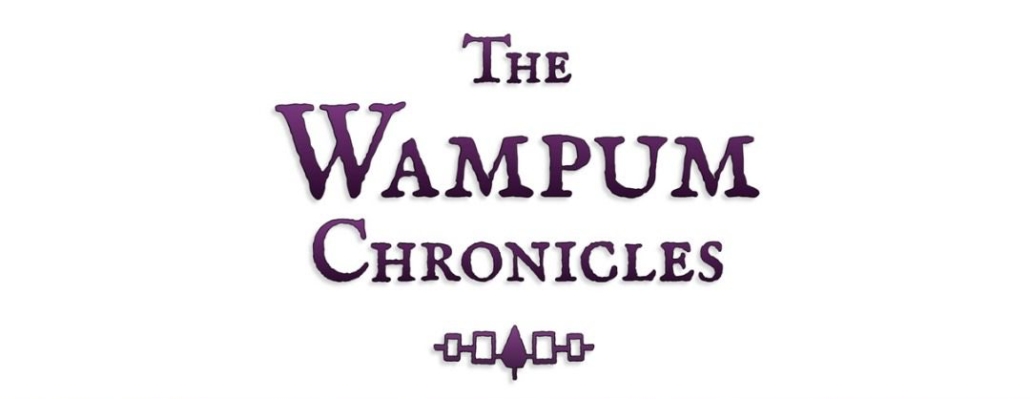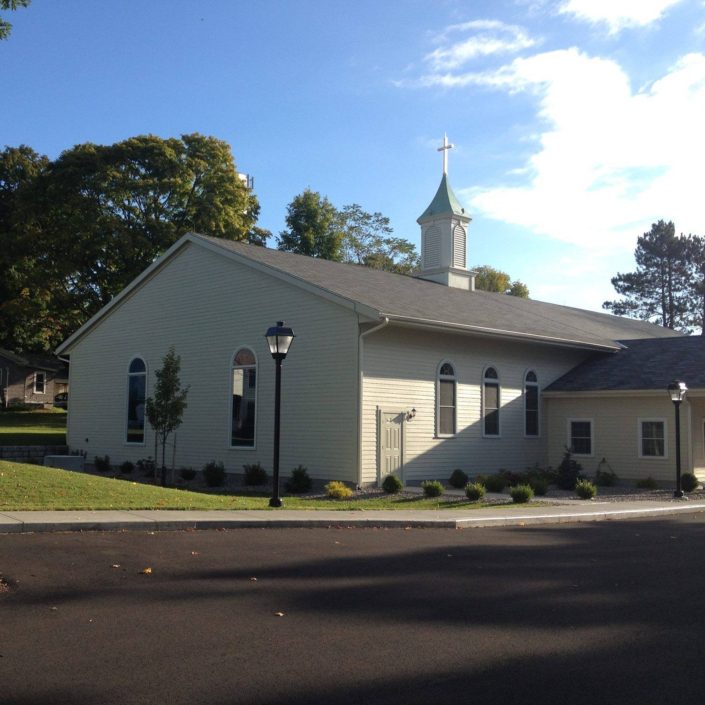
“…To Smoke the Pipe of Peace…”
Diplomacy and Peacemaking at the End of the French & Indian War
(Originally published in The Peoples’s Voice, August 26, 2005)
Written by Darren Bonaparte
In the years leading up to the French and Indian War, and throughout the war itself, Sir William Johnson did his best to encourage the Seven Nations of Canada to loosen themselves from their alliance to the French and take hold of the Silver Covenant Chain of Peace and Friendship with the British…and to restore friendly relations with the Iroquois Confederacy.
The French General Dieskau, who led warriors from the Seven Nations against their Mohawk Valley kin at the “Bloody Morning Scout,” doubted the fidelity of his Kahnawake allies, and suspected them of warning the Mohawks at the front of the British forces that they were walking into an ambush. He was right, but the reluctance of the northern and southern Mohawks to shed each other’s blood would not survive that terrible day.
General Marquis de Montcalm was another French officer who had little respect for his native allies, and after denying them the promised spoils of war when Fort William Henry was captured in 1757, they began to leave his army in droves.
When the tide began to turn in favor of the British, Sir William Johnson was able to convince almost 700 warriors from the Six Nations to accompany His Majesty’s forces as they swept the French from the region, most notably at Fort Niagara. By the time the British army began to make its way down the St. Lawrence River to conquer Montreal in 1760, the Seven Nations of Canada realized that they had picked the losing side. They sent envoys to talk peace with Sir William Johnson when the British occupied the Onondaga village at Oswegatchie, now known as Ogdensburg, and conquered Fort Levis, a French outpost on what is now Chimney Island. As General Jeffrey Amherst noted in his journal,
At night Capt. Kennedy came to me. He arrived with Indians from the French & brought me a Letter from a Priest to offer Peace on the Indian side.
This couldn’t have come at a better time, as more than 500 of the Iroquois had already left the army in disgust and returned home. Amherst had the letter translated into English and gave it to Johnson, telling him,You will be best able to Judge what will be the most likely means to hinder the Indians from joining the Enemy, in which case they may be Assured of being permitted to Live in Peace and Quiet, and of receiving all the protections they can desire.
Amherst’s journal entry for the following day, August 30th says only this:
Sr. Wm Johnson all day in conference with Indians.
Johnson kept records of all his Indian councils, but in this case, the transcript has not been found. It is certain that a treaty was concluded, because it would be referred to as such for years afterward.
As Johnson later noted,
The Peace which I settled with the 9 Nations before mentioned, was productive of such good consequences that some of these Indians [15 Swegatchie warriors] joined us, & went upon Partys for Prisoners & ca whilst the rest preserved so strict a neutrality that we passed all the dangerous Rapids, and the whole way without the least opposition.
The British army lost four men to the rapids at Long Sault. While some of Amherst’s troops encamped at what is now Cornwall, Ontario, the rest went on ahead to Lake St. Francis. Johnson and the 175 remaining Iroquois set out in batteau and canoe to continue the work of diplomacy begun at Oswegatchie. As Captain Knox reported in his journal for September 1st,
Sir William Johnson and his Myrmidons went to Hasquesashnagh, a small Indian village of the five nations, to smoke the pipe of peace, and to assure them of our protection, upon their future good behavior.
The people at Akwesasne promised not to fire upon the British as they passed, as long as the British promised to protect their territory from white encroachment once the war was over. With Johnson’s assurances, they even agreed to lead the British forces through the rapids further downstream, a passage which nevertheless cost the British
…forty-six batteaus, seventeen whale-boats, and one row-galley, by which eighty-four men were unfortunately drowned.
The bulk of the British army made it through, however, and Johnson would later give medals to the ten Akwesasronon who helped them navigate.
On September 5th, the British encamped below the rapids at Ille-Perrot and prepared for the march on Montreal the following day. As Knox noted,
…eight sachems of different nations, lately in alliance with the enemy, have surrendered, for themselves and their tribes, to General Murray.
According to Knox, the peace overtures of the Hurons and other native allies of the French were not well received by some of the Mohawks with the British army:
While these Chieftans were negotiating a peace, two of our Mohawks entered the apartment where they were with the General and Colonel Burton: after viewing the others with great earnestness, they made a set at them; but the General and Colonel interposed, and exacted a promise from the Mohawks that they would not molest the others, who had been put out for a few minutes, and were again called in; upon their re-entering, they looked eagerly at each other, uttering heh! heh! heh! with great vehemence; after which one of the Mohawks expressed himself, in disjointed sentences, to the following effect: ‘It is well for you that you have surrendered,- and that these Generals are here;- it is they that protect you,- or we two Mohawks would scalp every man of you.’ Hereupon one of the French warriors took a small stick with his knife, and notched it: the other than re-assumed, – ‘Do you remember, when you treacherously killed on of our brothers at such a time?- Ye shall one day pay dearly for it, ye cowardly dogs,- let the treaty be as it will:- I will tell you, we will destroy you and your settlement- root and branch;- ye are all cowards;- our squaws are better than you,- they will stand and fight like men- but ye sculk like dogs, &c. &c.’ Between every pause the French chief uttered heh! heh! And repeated his notches on the stick, till at length, being reproached with cowardice, and equalled to the squaws, he could no longer contain himself, but set up a horrid yell, and, with a tenfold emotion, cut a long sliver off the stick, which seemed to be a signal for his companions to fall on; but the General and the Colonel exerted themselves in keeping the peace, put the Mohawks out of the room, and laid both parties under the strongest injunctions not to molest each other, on pain of being most severely chastised by the Commander in Chief.
Surrounded by an overwhelming force, and abandoned by their native allies, the French surrendered Montreal without firing a shot in its defense. They signed the Act of Capitulation on September 8, 1760…five years to the day after the Bloody Morning Scout. Peace may have been forged between the Seven Nations and the British, but Johnson would need to conduct further diplomacy to temper the bad blood between the Seven Nations and their Six Nations kin.
Sources:
Knox, John. The Journal of Captain John Knox, vol. II, 1914.
Thompson, John. The Treaties of 1760. The Beaver. April-May, 1996.
Next in series: “Burying the Hatchet” at the Treaty of Kahnawake
By Darren Bonaparte, historian and author of The Wampum Chronicles. Reprinted with permission.
Darren Bonaparte is a cultural historian from the Akwesasne First Nation. He is a frequent lecturer at schools, universities, museums, and historical sites in the United States and Canada. He has written four books, several articles, and the libretto for the McGill Chamber Orchestra’s Aboriginal Visions and Voices. Darren is a former chief of the Mohawk Council of Akwesasne. He is the creator of The Wampum Chronicles and historical advisor to film and television. He currently serves as the Director of the Tribal Historic Preservation Office of the Saint Regis Mohawk Tribe.














 Photo by Sarah Rogers
Photo by Sarah Rogers